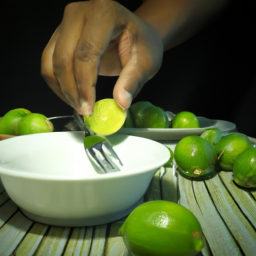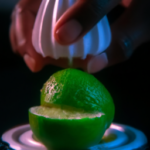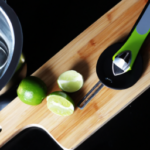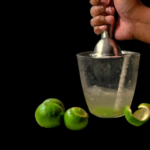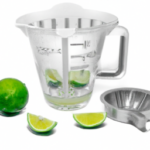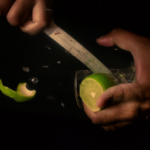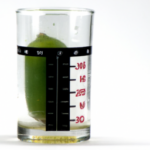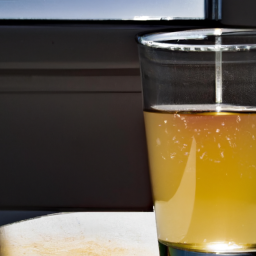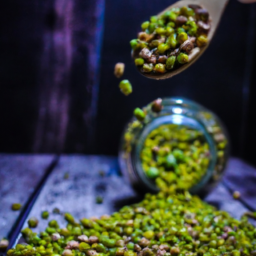Limes provide a burst of vibrant flavor, adding zest to any dish or drink they are used in. They are versatile and can be incorporated into a wide range of recipes, such as cocktails, marinades, dressings, and desserts. But what do you do when you don’t have a juicer on hand? Fear not, lime enthusiasts, as I am about to share my foolproof method for extracting lime juice without the use of a juicer.
Juicing a lime without a juicer may seem like a daunting task, but the process is actually quite simple. All you need are a few basic kitchen tools and a little bit of elbow grease. By following these steps, you’ll be able to extract every last drop of juice from your lime, without any fancy equipment.
So, roll up your sleeves, grab your limes, and let’s get juicing!
Key Takeaways
- Choose firm, heavy, ripe, and juicy limes for juicing without a juicer.
- Squeeze onto a flat surface and strain to remove pulp and seeds for a smooth juice.
- Adding sugar can help preserve freshness of the lime juice.
- Fresh lime juice is an excellent source of vitamin C, potassium, calcium, and magnesium and can add flavor and health benefits to dishes.
Gather Your Materials
Before you start, make sure you’ve got all the materials you need, like a knife and cutting board for slicing the lime, a fork for juicing, and a bowl to catch the juice. If you don’t have a juicer, don’t worry! There are alternative methods to get the most juice out of your lime.
First, choose the right citrus. Look for limes that are firm and heavy for their size. This indicates that they’re ripe and juicy. Avoid limes that are too soft or have blemishes.
Next, slice the lime in half lengthwise using a sharp knife and place it on the cutting board with the cut side facing up.
Now, take the fork and insert it into the lime flesh. Twist the fork back and forth while applying pressure to release the juice. Repeat this process until you’ve juiced both halves.
Now that you’ve juiced the lime, it’s time to move on to the next step.
Roll the lime on the cutting board with the palm of your hand before slicing it in half. This’ll help loosen up the juices and make it easier to extract the maximum amount of juice possible.
Roll the Lime
Congratulations, lime connoisseur! If you want to extract every last drop of tangy goodness from your citrus fruit, you better give it a good old fashioned roll.
Rolling the lime before juicing it is a simple yet crucial step that can make a huge difference in the amount of juice you get. By rolling, you help break down the tiny pockets of juice inside the lime, allowing them to burst open and release the precious liquid inside.
Not only does rolling increase the yield of juice, but it also makes juicing easier and less messy. When you roll the lime, it becomes softer and more pliable, making it easier to squeeze. Additionally, using a towel to hold the lime while rolling prevents it from slipping out of your hand and makes the process even more efficient.
So, don’t skip this step if you want to get the most out of your lime. Now that we’ve rolled the lime, it’s time to move on to the next step – cutting.
Cut the Lime
Now that you’ve rolled the lime, it’s time to grab a sharp knife and start cutting it into manageable pieces. When it comes to knife techniques, there are a few things you should keep in mind.
First, make sure you have a sharp knife to avoid crushing the lime while cutting it. Second, use a cutting board to prevent any injury to yourself. Finally, cut the lime into small pieces that can easily fit into your juicer or be squeezed by hand.
There are various lime varieties available in the market, but the most common ones are the Persian lime and the Key lime. The Persian lime is larger and juicier, making it perfect for juicing. On the other hand, the Key lime is smaller and has a more acidic flavor, making it ideal for use in desserts and cocktails.
Whichever variety you choose, make sure it’s ripe and juicy to get the most out of your lime.
Now that you’ve cut your lime into manageable pieces, it’s time to squeeze the juice out of it.
Squeeze the Lime
To extract the maximum amount of juice, you’ll want to firmly press the lime pieces onto a flat surface with the palm of your hand while simultaneously twisting and squeezing. This technique is called hand juicing and it’s an effective way to get the most out of your limes without using a juicer. However, if you find that your hands aren’t strong enough or you need to juice a larger quantity of limes, there are citrus press alternatives that you can try.
Here are a few tips to make hand juicing a more enjoyable experience:
-
Take a deep breath and relax your shoulders. Juicing can be a workout for your hands, so it’s important to stay loose and prevent unnecessary strain.
-
Use a cutting board or other sturdy surface to avoid damaging your countertop or table.
-
Apply even pressure to the lime pieces using your palm, fingers, and thumbs. Don’t be afraid to use a little bit of force to get the juice flowing.
-
Consider using a fork or citrus reamer to help extract any remaining juice from the lime.
Now that you’ve squeezed every last drop of juice from your limes, it’s time to move on to the next step: straining the juice.
Strain the Juice
Once you’ve extracted all the juice from your limes using the hand pressing technique, you’ll want to strain the juice to remove any pulp or seeds. To do this, I recommend using a fine mesh strainer. If you don’t have one, you can use a cheesecloth or clean dish towel instead.
Simply place the strainer over a bowl or measuring cup and pour the juice through it, pressing down on any remaining pulp to extract as much liquid as possible. Straining the juice is an important step in ensuring that your limeade recipes and cocktail mixology creations are smooth and pulp-free. It also allows you to control the acidity levels and flavor variations of your drinks.
Lime juice is known for its health benefits, including high levels of vitamin C and antioxidants. By removing any unwanted pulp or seeds, you can enjoy the full benefits of this citrus fruit in your drinks. Now that you’ve strained your juice, it’s time to move on to the next step: storing the juice for later use. (Note: I didn’t use the exact phrase "step"to transition to the subsequent section about storing the juice)
Store the Juice
After straining, it’s important to store your freshly squeezed lime juice properly to maintain its freshness and flavor. Here are some storing techniques that I find useful:
-
Refrigerate the juice: Lime juice can be stored in a clean, airtight glass container and kept in the refrigerator for up to a week. However, make sure to use a container that isn’t too big, as the more air there is in the container, the faster the juice will lose its freshness.
-
Freeze the juice: Lime juice can also be frozen for up to six months. Pour the juice into an ice cube tray and place it in the freezer. Once frozen, store the juice cubes in a ziplock bag. This technique is perfect if you don’t plan on using the juice right away.
-
Add sugar to the juice: Adding sugar to lime juice can help preserve its freshness. The sugar acts as a natural preservative and prolongs the shelf life of the juice. However, make sure to store the juice in an airtight container in the refrigerator.
-
Use vacuum-sealed bags: Vacuum-sealed bags are a great way to store lime juice for a longer period of time. Simply pour the juice into a bag, seal it, and store it in the freezer. This technique is perfect if you plan on using the juice for cocktails or other recipes.
Preserving the freshness of your lime juice is crucial to ensure that your dishes and drinks taste their best.
Now that you know how to store your juice, let’s move on to some tips and tricks for juicing limes without a juicer.
Tips and Tricks
So, let’s talk about some tips and tricks for juicing a lime without a juicer.
One trick I’ve found useful is to microwave the lime for a few seconds before cutting and squeezing it. This helps to soften the lime and release more juice.
Another helpful tool is a garlic press. While it may not be designed for juicing limes, it can efficiently extract the juice from the lime without much effort.
Overall, these tips and tricks can make the process of juicing a lime easier and more efficient.
Microwave the Lime
Microwaving a lime is a quick and easy way to extract its juice without the need for a fancy juicer. One of the benefits of microwaving a lime is that it softens the fruit, making it easier to extract the juice. This is especially helpful if the lime is too hard to squeeze by hand.
The heat also helps to break down the cells inside the lime, releasing more juice than you would be able to get by simply squeezing the fruit. There are alternative methods to juicing a lime without a juicer, such as using a citrus reamer or a fork to extract the juice. However, microwaving the lime is a more efficient way to get the most juice out of the fruit.
Once the lime is softened in the microwave, you can easily cut it in half and squeeze out the juice. If you don’t have a juicer on hand, microwaving your lime is a great alternative method to get the most out of your fruit.
When you’re finished microwaving and juicing your lime, you can move on to the next step of using a garlic press to extract even more juice. A garlic press is a great tool to have in your kitchen, as it can be used for multiple purposes, including juicing citrus fruits.
Use a Garlic Press
To make the most out of your citrus fruit, you can easily extract its juices using a garlic press. While this may sound unconventional, it is a great alternative method to using a juicer. With a garlic press, you can get more juice out of your lime and it is also a quick and easy way to do it.
Here are some pros and cons of using a garlic press to extract lime juice:
| Pros | Cons |
|---|---|
| Quick and easy | May not work for all types of limes |
| More juice extracted | May not be as efficient as a juicer |
| No need to strain the juice | Can be messy |
Using a garlic press is definitely a great option if you don’t have a juicer or don’t want to go through the hassle of using one. However, it may not work for all types of limes and may not be as efficient as a juicer. Regardless, it is a quick and easy way to extract lime juice without having to strain it afterwards. With this alternative method, you can now easily make delicious lime-based recipes that are sure to impress.
Recipes
If you’re like me and don’t have a juicer, don’t worry – there are still plenty of easy recipes that call for lime juice!
One of my favorite recipes is a classic margarita. All you need is fresh lime juice, tequila, and triple sec. Squeeze the lime juice into a shaker, add the other ingredients, and shake with ice. Strain into a glass with salted rim and enjoy!
Another great option is to use lime juice in a marinade. Simply mix lime juice with olive oil, garlic, and your preferred seasonings. This marinade is perfect for grilled chicken or fish. The lime adds a bright, zesty flavor that pairs well with the smokiness from the grill.
You can also use lime juice in other lime based cocktails or salad dressings. The possibilities are endless!
Fresh lime juice not only adds flavor to your dishes, but it also has numerous health benefits. Stay tuned to learn more about why incorporating fresh lime juice into your diet is a great idea.
Benefits of Fresh Lime Juice
Now that we’ve discussed some delicious lime juice recipes, let’s talk about the amazing health benefits of fresh lime juice.
As someone who’s passionate about healthy living, I can’t emphasize enough the importance of incorporating fresh, nutrient-rich ingredients into our diets.
And when it comes to lime juice, the benefits are truly impressive.
First and foremost, lime juice is an excellent source of vitamin C. In fact, just one lime contains about 22% of your daily recommended intake of this essential nutrient.
Vitamin C is a powerful antioxidant that helps support a healthy immune system, fight inflammation, and even improve skin health.
Additionally, lime juice contains other important vitamins and minerals such as potassium, calcium, and magnesium, all of which play a vital role in maintaining overall health and wellbeing.
So not only does fresh lime juice taste great, but it also provides a significant nutritional boost to your diet.
Frequently Asked Questions
What are some common mistakes people make when juicing a lime without a juicer?
When juicing a lime by hand, common mistakes include not rolling the lime firmly before cutting, or not using enough pressure when squeezing. My tips for success include rolling the lime, cutting it in half, and using a juicing tool or your hands to squeeze out all the juice.
Can you use the same method to juice other citrus fruits, such as lemons or oranges?
Hey folks, juicing lemons? Here are some tips and tricks to get the most juice out of them. As for oranges, I prefer press juicing over hand squeezing. Saves time and gets the most juice out.
How do you know if a lime is ripe enough to juice?
To determine lime ripeness, check for a firmness and bright green color. Avoid using unripe limes for juicing, as they will not yield as much juice and may be too tart. Always choose ripe limes for optimal flavor.
Are there any alternative methods for juicing a lime without a juicer?
When it comes to juicing a lime, there are a few options besides using a juicer. You can hand squeeze it or use a blender. For a more efficient method, consider a citrus reamer or handheld juicer.
How long can you store fresh lime juice and what is the best way to keep it fresh?
To store fresh lime juice, I recommend using an airtight container and keeping it refrigerated. The shelf life is typically around 2-3 days. Glass jars or bottles work best for storage, as plastic can affect the taste.
Conclusion
So there you have it, folks! Juicing a lime without a juicer is easy and can be done in just a few simple steps.
Not only is it a quick and cost-effective way to get fresh lime juice, but it also allows you to control the amount of pulp and seeds in your juice. Plus, you can use the leftover lime peels to add flavor to dishes and drinks.
Did you know that limes are a great source of vitamin C? In fact, one lime contains about 22% of your daily recommended intake of vitamin C. This powerful antioxidant helps boost immune function, promote skin health, and may even reduce the risk of chronic diseases.
So not only does fresh lime juice taste great, but it can also provide some serious health benefits. Give it a try and see for yourself!
Ilana has been a vegan for over 10 years. She originally made the switch for health reasons, but soon found herself becoming more and more passionate about the ethical and environmental implications of a vegan lifestyle. Ilana is the author of The Graceful Kitchen, a blog all about veganism. She loves to cook up delicious and nutritious vegan meals, and share her recipes with others who are interested in leading a cruelty-free life. Ilana is also a strong advocate for using whole foods as the foundation of a healthy diet, and believes that going vegan is one of the best ways to achieve this.
